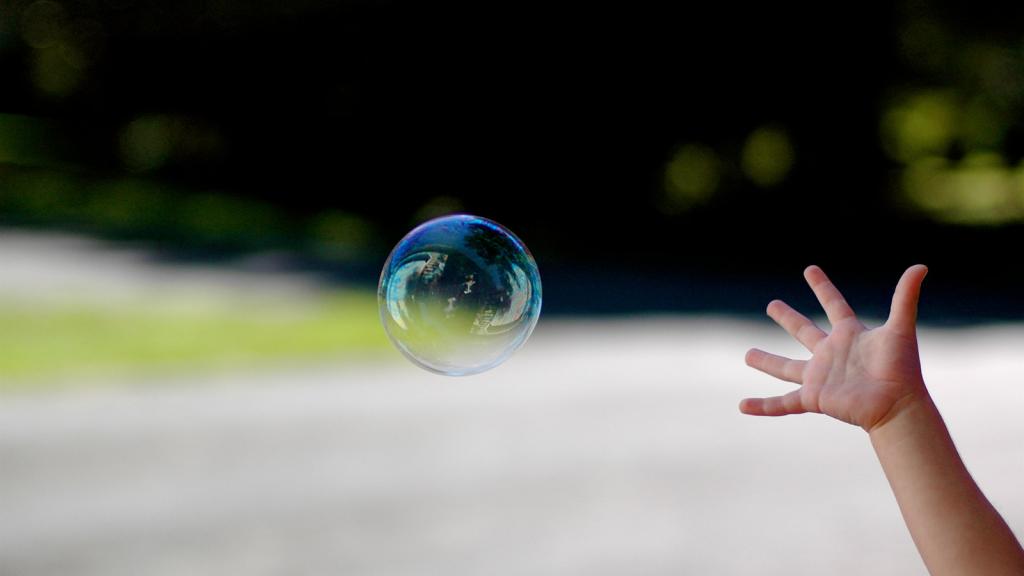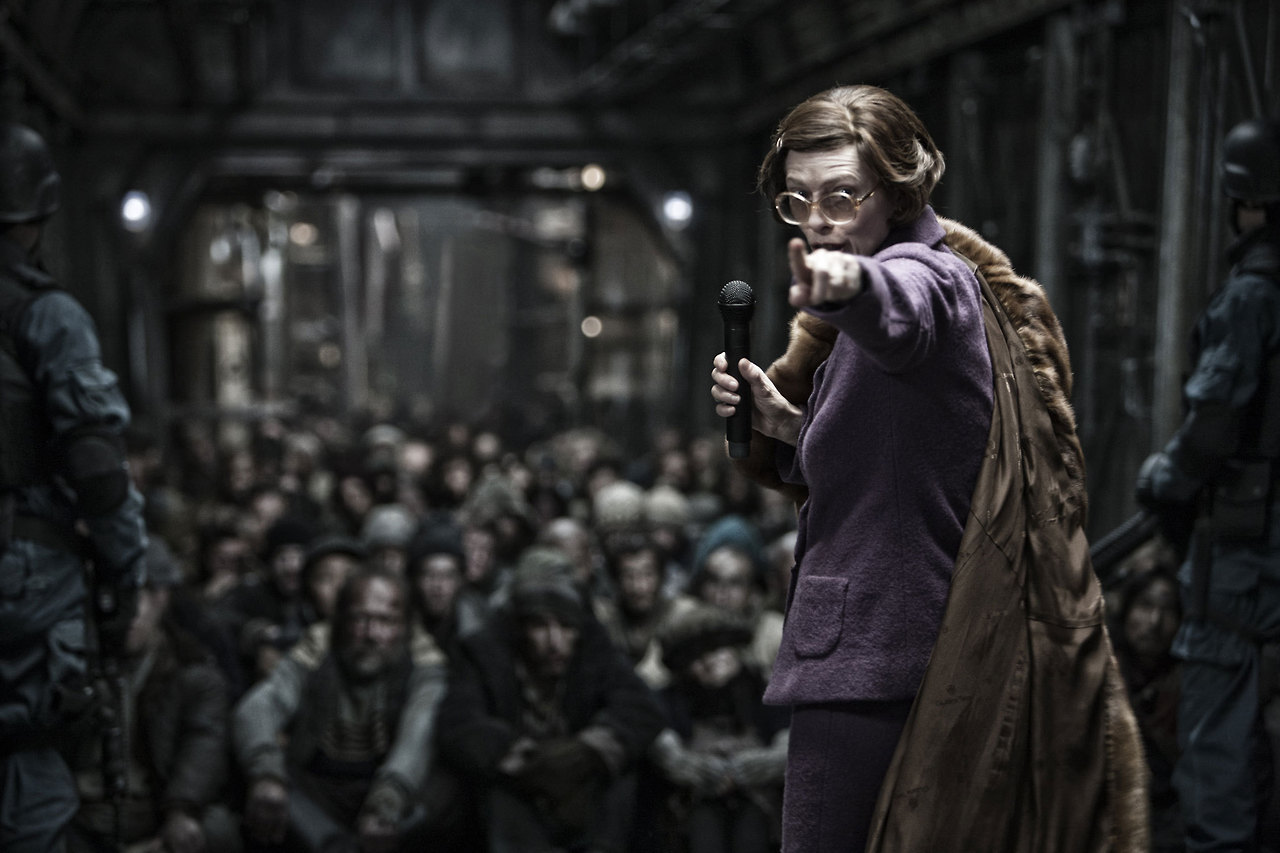First of all, you’ll have to get past the title. Yes, Snowpiercer sounds like temperature-play porn or badly translated anime. Moving on.
The movie is actually a wildly bizarre sci-fi action flick from celebrated Korean director Bong Joon Ho (The Host), based on a French graphic novel. It enjoys an 83-percent rating on Metacritic. Not bad for a movie where all the action is confined to a single train, and soot-dusted extras from Oliver get into bloody axe battles with masked, bondagey bros with night vision. Also, Captain America has a beard in it and he never smiles. (It opened in a few select cities a few weeks ago and expands to 354 theaters and video-on-demand today.)
It’s also a movie that wouldn’t exist without climate change. Not that the movie cares to go into it: A planet baking towards catastrophe merely sets up the dystopian playground, while the mechanisms behind it go unexplored. It’s largely employed as fuzzy background dread for the characters’ increasingly dire and twisted arcs — until they have to face a changed climate in literal terms near the film’s end. Lots of other sci-fi films have used climate change as set dressing, but few are this satisfying as thoughtful entertainment. Great cli-fi fiction (in addition to respected nonfiction) is poised to have a moment. With tangible catastrophe at our doorstep, Bong Joon Ho seems to understand we might as well have some fun with it.
Here’s the high concept: Global warming hits humanity hard, and an attempt to geoengineer our way out of it ends up deep-freezing the planet. We’re told that nothing survives. The scrappy remains of humanity pile into a giant high-speed train that perpetually circles the Earth. In a none-too-subtle indictment of modern class tensions, the grim unfortunates are crammed into the shabby, windowless cabooses, where they pass the time by sleeping in rusty oil drums and choking down gelatinous bricks of “protein” slow-churned from mixed arthropods. Meanwhile, in the front cars the 1 percent dine on fresh sushi from sealed, “sustainable” SeaWorld aquarium cars and rave it up in furs on Gaga-gone-awry discotheques. The rich at least get to stare at the barren, sub-zeroed ruins of civilization from the car windows.
The haves and have-nots never come into contact. They’re separated by totalitarian, armed thugs and lorded over by a hilariously over-the-top bureaucrat played by Tilda Swinton, wielding a clipboard and Thatcher-era dentition. Naturally, rebellion and bloodshed ensue as the oppressed fight their way to The Engine at the very front, where the mysterious leader and builder of the train Wilford lives.
[Nerd alert: Spoilers ahead!]
Snowpiercer gets very weird very fast — and that’s its primary strength. The best friend who usually dies by heroic sacrifice in the third act? Yeah, that guy gets a knife in the back a few minutes in. The turncoat villainess who is the key to success? Let’s just blow her away in a candy-colored elementary school classroom when she gets too insufferable for the protagonist. Bong’s world is inventive, brutal, and hilarious: A graphic axe battle is halted mid-arterial spurt by all parties, so they can celebrate together when the train passes a happy-new-year landmark.
The film lands glancing blows on all kinds of green issues. Mass transit saves humanity! An all-insect diet keeps poorer humans nourished. Swinton and other characters constantly harp on the “sustainability” of various processes on the train. The perpetual fuel system produces a kind of flammable, caustic marshmallow byproduct that some characters (including a savant scientist and psychic girl) get addicted to. After too many plot reversals and gotcha moments, the movie finally goes literally and metaphorically off the rails in the final 20 minutes, and what remains of humanity walks out onto the ice to be confronted by …. a polar bear, the zoological mascot of the climate movement. Whether it’s supposed to signal the terror of uncertain human survival or the hope that even the most vulnerable biota can survive our climate missteps, the film doesn’t say. For his part, Bong told New York‘s Vulture blog he sees it as hopeful:
You realize later on that the kids are the ones keeping this engine going, and this machinery intact. The engine is itself is on its way to extinction along with cigarettes, and other goods. Extinction is a repeated word throughout the film. But outside the train, life is actually returning. It’s nature that’s eternal, and not the train or the engine, as you see with the polar bear at the end.
Snowpiercer requires a Hoover Dam to suspend disbelief at the science that drives the plot, but here is where the film offers an inspired tool for climate awareness: No. science. at. all. Climate change is merely the Big Bad that pushed us into a terrible struggle, like Russians in the ’80s or nuclear weapons in the ’50s (also, Russians in the ’50s). I’d argue compelling stories where catastrophic climate change is a given can do as much or more in the fight to come than any browbeating documentary saddled with burdensome ‘facts’ and sober models. Those already exist in the public discourse and should remain, but the more climate sinks in as a nightmarish inevitability that drives our scariest sci-fi, the more our culture at large can incorporate that into their background thinking.
From civil rights to bankrupt technology to corporate shenanigans to identity crimes, sci-fi and speculative fiction have always possessed a unique power to give form to amorphous fears — and sometimes even prepped a populace to act. Sure, entertainment and pop culture are perhaps small cogs in the cultural machine. But consider this: Maybe the only reason we haven’t been overrun by omniscient killer robots is because gifted storytellers gave us plenty of advanced warning.
We’re just getting warmed up on Snowpiercer. Go watch it, and look out for more discussion next week.



